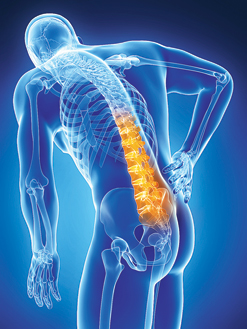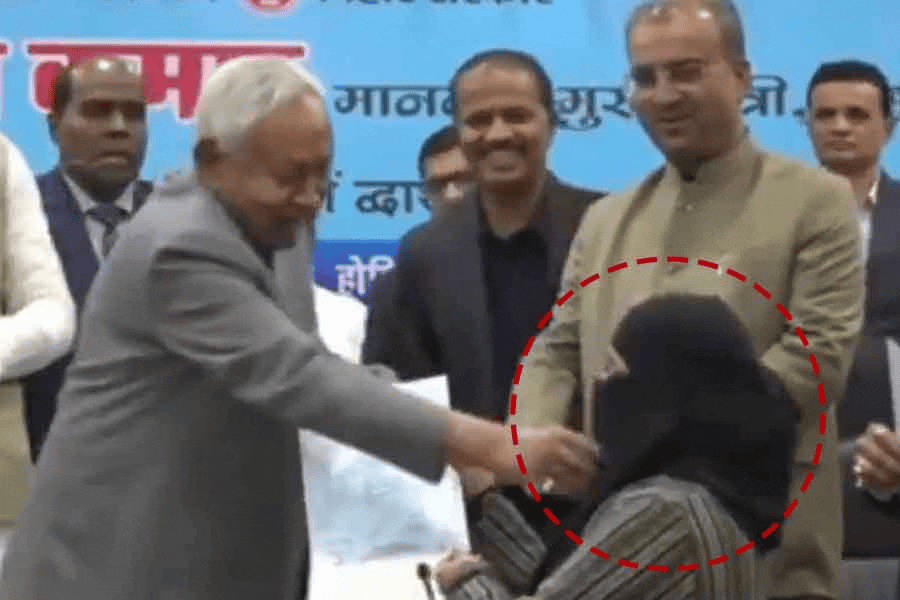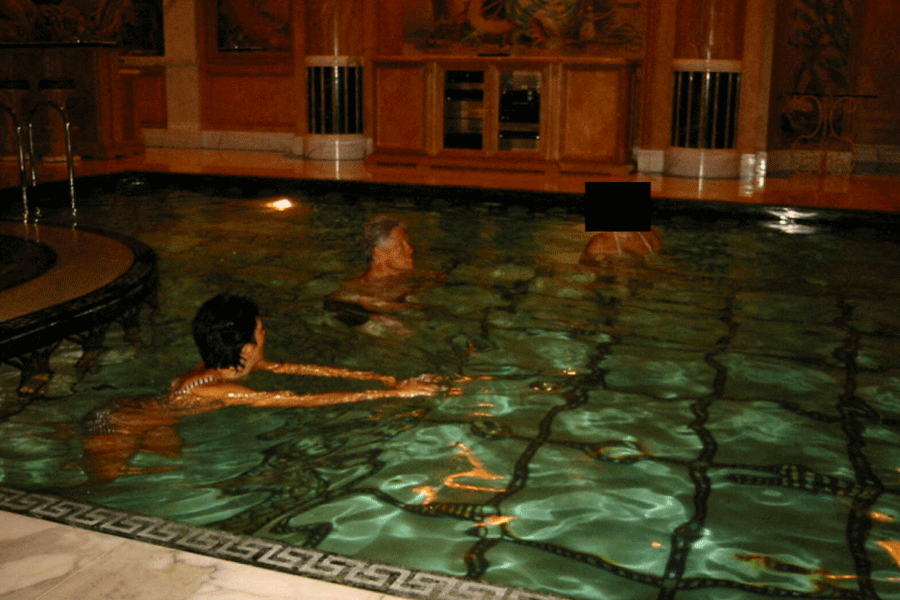
Three out of four Indians suffer from back pain at least once in their lifetime. And that's a conservative estimate. In most of these cases, the root cause is degeneration of one or more intervertebral discs (IVD), caused mainly by a sedentary lifestyle, bad posture and stress.
These discs, which separate one vertebra from another, absorb the pressure that emanates from different physical activities such as walking and running. They are capable of doing this because they mainly contain cartilage tissue called nuclear pulposus - a jelly-like cushion - which distributes pressure and provides spine mobility in normal conditions. The spine is made of 33 vertebrae, which are strung together with IVDs in between.
Disc degeneration is a common problem as people age. Over time, the soft, compressible discs that work as the spine's shock absorbers, break down. Although this degeneration can occur anywhere along the spine, it mainly happens near the neck and lower back, causing intense pain.
In the early stages, back pain can be managed with exercises alone and later along with drugs. However, if the pain is caused by disc degeneration - commonly called slipped disc - it is impossible to get rid of. In such cases, the only option available to spine doctors is to remove the damaged disc and fuse the discs above and below. The relief available from this invasive procedure called spinal fusion is short-lived, however. Sooner than later the adjoining discs start degenerating as the extra load takes a toll on them.
Soon, however, we may have a better option to deal with slipped discs. Two research teams in India - one in Delhi and the other in Kochi - are developing strategies to regenerate damaged discs. Both teams have independently developed injectable hydrogels that can deliver drugs and stem cells to the affected area so that cartilage regeneration can be initiated.
Currently at proof-of-concept stage, these techniques hold much promise but need to cross many stages - including animal trials and pre-clinical studies - before they can be taken to the regulatory authorities for approval for testing in humans.
Researchers at the Indian Institute of Technology (IIT), Delhi, along with their India-born counterparts at a university in Ireland, have created a silk-based hydrogel that can deliver a drug or stem cells or both encapsulated in hollow silk microspheres. The materials scientists from the Amrita Institute of Medical Sciences (AIMS) in Kochi, on the other hand, have developed a similar injectable composite hydrogel made of chitosan - a natural polymer retrieved from shrimp and crustacean shells - and a synthetic one.
Experiments conducted in labs have already proven both the biomaterials' biocompatibility and mechanical strength. These techniques have a long way to go before they become available in clinics.
"We are very excited with the results we have got so far," says Sourabh Ghosh, associate professor at IIT's textile technology department who, along with Abhay Pandit, a biomaterial expert at the National University of Ireland at Galway, led the study. The paper appeared in the July issue of Biomaterials.
The scientists first developed tiny empty spheres made of the silk protein fibrion. These hollow microspheres of sizes ranging from less than one micrometre (one-millionth of a metre) to nearly five micrometre were subsequently filled with glucosamine, an amino sugar involved in the biosynthesis of aggrecan, a critical component for the cartilage structure. The microspheres were subsequently embedded in a silk hydrogel, which can be injected into the disc.
The IIT scientists studied the material's mechanical properties by injecting it into degenerated IVDs harvested from sheep in the lab and found that the silk-in-silk injection was able to restore the compressive properties of the degenerated IVDs.
"More interestingly, the hollow microspheres offer the possibility of delivering either only drugs or drugs along with stem cells that can differentiate into nuclear pulposus tissue, depending on the severity of the condition," Ghosh told KnowHow.
The experiments carried out by the AIMS team too yielded positive results, says Manitha Nair, a biotechnologist at the AIMS' centre for nanosciences and molecular medicine.
Instead of silk polymers, the Kochi team used a hydrogel made of chitosan and a synthetic polymer. Subsequently, the team, which included materials scientist R. Jayakumar, incorporated nanoparticles of chondroitin sulphate - which previous studies showed improving the differentiation of stem cells into chondrocytes, the only cells found in the cartilage tissue. The paper appeared in the journal Colloids and Surfaces online last week.
Besides, the scientists found that the hydrogel possesses appropriate mechanical strength and swelling pressure and concurrently supports proliferation of chondrocyte-like cells.
According to Nair, one of the major issues that scientists working on tissue regeneration of IVDs face is that extremely low levels of oxygen are available in the cartilage region. "Cartilages are avascular regions (areas without blood vessels). Oxygen becomes available there only through diffusion. So it is very important that a biomaterial that is being developed for this purpose is able to function in such a condition," she says.
Here's hoping that at least one, if not both, technologies make it to clinical trials.











